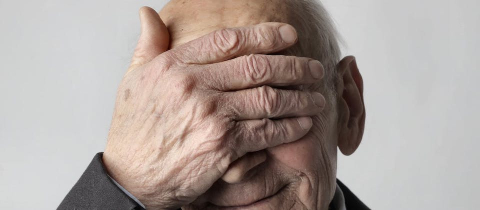Mention Vitamin D and thoughts usually turn to bone strength. That is understandable since the relationship between this vitamin and the incorporation of calcium and phosphorus into bone is well established. In the early twentieth century, Sir Edward Mellanby in Great Britain was concerned about the incidence of rickets, a disease characterized by bow legs due to impaired bone formation. He was put on the right track by American biochemist Elmer McCollum’s recent upending of the dogma forged by German chemists, particularly the renowned Justus von Liebig, that an adequate diet consisted of 12% protein, 5% mineral and 10–30% fat, with carbohydrates making up the remainder. McCollum showed that feeding rats such a diet resulted in impaired growth and went on to prove that the problem could be prevented if eggs, butter, or cod-liver oil were added to animals’ diet. He then managed to isolate from these the specific substance that was needed for proper growth, eventually named vitamin A.
Polish biochemist Casimir Funk introduced the term “vitamine” in 1912 for substances that were critical for health and had to be supplied by the diet because they could not be made by the body. Funk was familiar with Dutchman Christiaan Eijkman’s observation that natives in the Dutch East Indies who ate brown rice were less vulnerable to the disease known as “beriberi” than those who ate white rice. He managed to isolate the protective factor from brown rice and found that it belonged to the “amine” family of chemicals, and since it was vital to life, he coined the term “vitamine.” The “e” was later dropped when it became apparent that other such essential dietary components, like vitamin A, were not amines.
Based on his discovery, McCollum urged people to “eat what you want after you have eaten what you should.” This caught Mellanby’s attention and set him wondering if perhaps rickets were also due to some dietary deficiency. Scots were known to have a very high incidence of rickets as well as a very limited diet based mostly on oatmeal. Mellanby decided to feed such a diet to dogs to see what would happen. Just like humans, they developed rickets. Fortunately, the dogs had been kept indoors with no sun exposure. Had they been outside, the experiment would have failed, because as later research would show, rickets can be prevented by sufficient sunlight.
Taking a page from McCollum’s book, Mellanby fed his dogs cod-liver oil and sure enough they recovered, leading him to propose that vitamin A was a rickets preventative factor. That turned out to be incorrect when McCollum, who had maintained an interest in vitamin A, showed that cod-liver oil prevented rickets even after oxygen had been bubbled through it to destroy the vitamin. Then in the 1920s, Viennese pediatrician Kurt Huldshinsky, and British biochemist Henriette Chick found that they were able to cure rickets in children by exposing them to summer sunlight or to artificially produced UV light. The rickets preventative factor termed vitamin D was finally isolated in 1932 and shown to be present in cod-liver oil. However, it was also formed on exposure to UV light from 7-dehydrocholesterol naturally present in the body. Vitamin D doesn’t exactly fit the definition of a vitamin given that it can be acquired without reliance on diet. It is more like a hormone since once formed in the body it stimulates a number of biochemical activities, with the absorption of calcium being at the top of the list.
Research on vitamin D requires measurement of amounts circulating in the blood. Blood levels can be measured either in nanograms per milliliter (ng/ml) or nanomoles per liter (nmol/L). To convert ng/ml to nmol/L multiply the ng/ml by 2.5. For example, 50 ng/ml is equivalent to 125 nmol/L. There is no universal agreement on sufficient blood levels, but most experts agree that it should be at least 30 nmol/L (12 ng/ml) with some saying that optimal levels are over 50 nmol/L (20 ng/ml). In general, exposure to sun for a couple of 15-minute periods a week is thought to be enough to maintain sufficient levels, but that is somewhat debatable because it depends on geographic location and extent to which the skin is covered up. As far as toxicity goes, there is no concern below 100 ng/ml (250 nmol/L).
Once the critical role of vitamin D in bone health had been identified, researchers focussed on other possible roles it might play in the body. Receptors for the vitamin were discovered on various immune system cells, suggesting that vitamin D has a role in immune function. Studies confirmed this, with a deficiency in vitamin D being linked with various autoimmune diseases as well as with increased susceptibility to infection. Especially interesting in the current COVID-19 climate, is that low vitamin D levels are associated with an increased risk of viral and bacterial respiratory infections as well as other respiratory ailments such chronic obstructive pulmonary disease (COPD), tuberculosis, asthma, and chronic obstructive pulmonary disease (COPD. Furthermore, vitamin D also appears to have an effect on blood coagulation with low levels possibly causing the formation of microthrombi, a phenomenon noted in some COVID-19 patients.
Although so far, no direct link between COVID-19 and vitamin D has been found, data suggestive of a relationship is accumulating. For example, when mortality rates per million are considered, countries that lie below 35 degrees North of the equator have lower rates. That happens to be the latitude above which countries may not receive adequate sunlight in the winter to allow for the synthesis of vitamin D in the skin. Vitamin D may not protect against infection, but what it may do is reduce the severity of the disease by suppressing the response of cells to cytokines, chemical messengers released by immune system cells. Normally, inflammation triggered by cytokines is helpful in mounting an immune response, but sometimes overproduction results in a “cytokine storm” that can lead to lethal complications.
Further evidence that vitamin D may have a role in battling COVID-19 comes from a recent British study that looked at blood levels of vitamin D in 20 European countries and found that the mean blood level in each country was strongly associated with mortality from the disease. Vitamin D levels were especially low in the elderly, below 30 nmol/L (12 ng/ml). For example, in Swiss nursing homes, average levels were 23 nmol/L and in Italy the majority of people over 70 years of age have levels below 30 nmol/L. These are the groups that are known to be at greatest risk of death from coronavirus infection. Of course, it must be said that a correlation between low blood levels of vitamin D and greater risk of death from SARS-CoV-2 infection does not prove that Vitamin D deficiency is the cause because populations at risk are also known to be more likely to suffer from other conditions such as hypertension and diabetes.
A new study from Louisiana State University serves up another dose of interesting data. Researchers reviewed the medical records of patients hospitalized with COVID-19 and looked at the major form of vitamin D that circulates in the serum, namely 25-hydroxycholecalciferol (25OHD). It turns out that 85% of patients in the ICU had low levels compared to 57% of patients on the regular floors, although here low levels were defined as below 20 ng/ml (50 nmol/L). Most strikingly, 100% of ICU patients younger than 75 had vitamin D insufficiency. It is also noteworthy that while in Louisiana African Americans represent only 30% of the US population, they account for 70% of COVID-19 deaths. Due to the sunlight filtering effect of melanin in the skin, African Americans traditionally have lower vitamin D levels. Interestingly, homeless populations seem to suffer fewer complications from coronavirus infection, possibly because of greater exposure to sunlight.
While no bullet has been located, we seem to have a smoking gun. What do we do with the smoke? Is it enough to act upon? As is always the case, it comes down to a risk-benefit analysis. Given that no risk has ever been observed with supplements of 1000 IU (25 mcg) of vitamin D3 a day, and that these supplements are generally affordable, and that excessive exposure to the sun has risks, it appears that while benefits of supplements may be debatable, the risk is essentially zero.
Curiously, some of the other lyrics from “Let the Sunshine In” also take on meaning in this “Age of the Coronavirus.”
We starve, look at one another, short of breath
Walking proudly in our winter coats
Wearing smells from laboratories
Facing a dying nation of moving paper fantasy
Listening for the new told lies….







